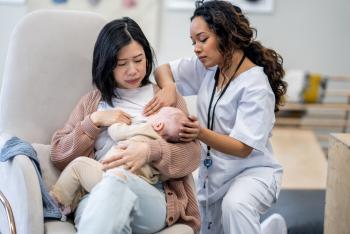Pregnancy cravings often begin in the first trimester as hormonal shifts influence taste and smell...
Read More
Affecting nearly 1 in every 10 women, endometriosis is when the tissue that lines the uterus begins to grow outside of the uterus—oftentimes in the ovaries, fallopian tubes and the tissue lining the pelvis. Though this extra tissue causes pelvic pain, it is not always easy to diagnose. To learn more about the signs and symptoms of endometriosis, we spoke with Neely Elisha, D.O., a board-certified OB-GYN at Inspira Medical Group’s Obstetrics and Gynecology office in East Vineland, New Jersey.

Currently, the cause of endometriosis is not known.
“The hormones that change and increase during your menstrual cycle, specifically estradiol—a type of estrogen—affect the endometrial tissue that is growing outside of the uterus, causing the area to become irritated and consequently, painful,” said Dr. Elisha. “Endometriosis, therefore, is considered an estrogen-dependent condition.”
Although its symptoms vary, knowing the signs of endometriosis is a critical step in finding a treatment that works for you. Some people may experience mild symptoms, some have moderate to severe symptoms and some have no symptoms at all.
The most common symptoms of endometriosis are:
“If you have any of these symptoms related to endometriosis, see your doctor. They can help diagnose and subsequently treat if needed,” said Dr. Elisha.
Because endometriosis cannot be detected by imaging studies like ultrasounds, this condition requires a clinical diagnosis to:
Explain when, where and how significant the pain is. This will help your doctor best determine the next steps for treatment.
Schedule and attend regular gynecologic examinations. This will allow your doctor to monitor your body and any changes that may be related to having endometriosis.
Endometriosis treatment can involve medication, surgical intervention or a combination of the two. But remember, the first step is to speak with your health care provider and be honest about any symptoms that you may be experiencing.
“The tissue that grows outside of the uterus causes irritation and also can result in adhesions—growing tissue that inappropriately connects the organs in your pelvis together—that can cause scarring as well as pain before or during menstruation and fertility problems,” said Dr. Elisha. “All of this is to say: Your pain is real. Your pain can be treated. Your pain does not have to be forever. We are here to help.”

Pregnancy cravings often begin in the first trimester as hormonal shifts influence taste and smell...
Read More
Dysphoric milk ejection reflex (D-MER) is a condition that causes sudden negative emotions during...
Read More
Polycystic Ovary Syndrome (PCOS) affects millions, yet many misconceptions still surround this...
Read More